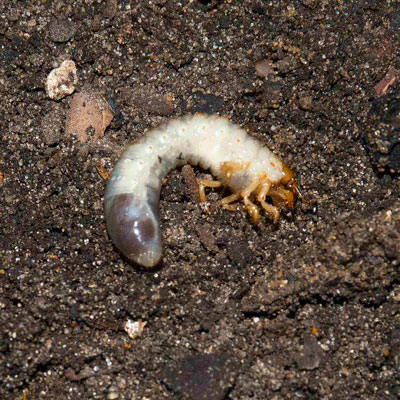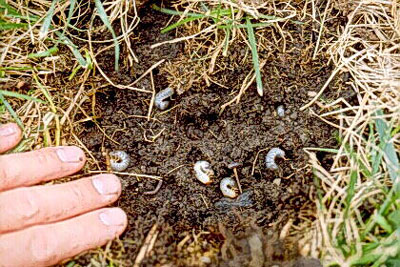Grub Worms: The Whole Story
At the time that Lynn and I moved to Texas in 1970, DFW was about to be hit by a multi-year plague of incredible damage done by white grub worms. Millions of dollars of lost lawns. Entire blocks of turf left dead on the ground. It didn’t matter if your lawn was St. Augustine or bermuda, but it did matter if the lawn was well tended. You didn’t find them chewing their way through dry, sparse turf.

I had just joined the Texas Agricultural Extension Service (now Texas AgriLife Extension) as Dallas County horticulturist, and I learned a lot more than I ever wanted to know about these pests. Chief among what I learned, how to control them. Products that would kill the grubs were identified, and timing of application was narrowed for peak efficiency. Within five or six years, white grub worms were reduced to minor players in our lawns and landscapes.
Oh, those bad years might have been a cyclical surge like we see with other insect pests. But here were the facts we took away from it all. Use these to determine if and when you really have grub damage.
Facts for the memory file…
• White grubs are the larval form of the small June beetle that emerges in adult form in mid- to late June in North Central Texas and two or three weeks earlier in South Texas.
• They are 3/4-inch long, always C-shaped, brown-headed with white bodies and with legs.
• There are other species of beetles that also will have grubs in the soil. I wrote about green June beetles here last week. Some types are much larger, both in the adult beetle form and in the grub. Some of those have two-year life cycles, so you’re likely to encounter them at any month. They are usually not damaging at all.
• They fly and mate as they emerge, laying eggs in moist parts of lawns. The eggs begin to hatch about six weeks after they are deposited. Initially they are BB-sized, but they grow to full larval size quickly, usually by late August or early September.
• They feed on living plant roots, usually of turf, but even of shrubs, flowers and groundcovers. They require one full year to develop full cycle, so they do not normally appear in ground that is repeatedly rototilled every few months such as a flowerbed or vegetable garden.

• It takes 5 or 6 grub worms per square foot to do measurable damage. At smaller populations, plants can usually outgrow any damage they do. Treatment is generally not justified at those lower numbers.
• To test for the extent of your grub population, use a square-bladed shovel to dig a one-square-foot test in your lawn. Lay the sod aside carefully, and look through the root zone in the top 3 inches of soil. That’s where you’ll find the grubs.
• Symptoms of grub damage: by late September and October, grass may begin to look dry in irregular blotches (as opposed to the round, brown 18- or 24-inch spots caused by brown patch fungus). If you pull on the grass, and if grub worms are present, the turf will come loose, runners and all. The grubs will have devoured the roots. As a comparison, grass that’s been impacted by brown patch will pull loose easily, too, but only the dead leaf blades. Brown patch is a leaf disease only. Runners remain firmly attached to the soil.
• In 2018 we had an unusual fall outbreak of take all root rot. Normally TARR is a spring-only disease (April and May). Its symptoms mimic those of grub damage. The grass comes up easily when pulled on, but the notable difference is that there are no grubs present with TARR.
It is highly unlikely that you will able to justify pesticide applications for white grub worms in 2019! They just aren’t that common in outbreak numbers. Be sure the grass is impacted. Be certain you find the grubs, and be sure you have them present in sufficient quantities to do harm.
The treatments…
It is very rare, in 2019, that you will see turf damaged by white grub worms. But if you do, apply a labeled insecticide that lists white grub worms clearly on its label. Apply the spray or granules carefully and evenly across the entire lawn, then water deeply to carry them 2 to 3 inches into the soil. Treatments must be made in summer or early fall. Grubs’ feeding stops as the soil turns cold in November, and by spring they’ll be in copper-colored pupal cases changing into the adult beetles.
